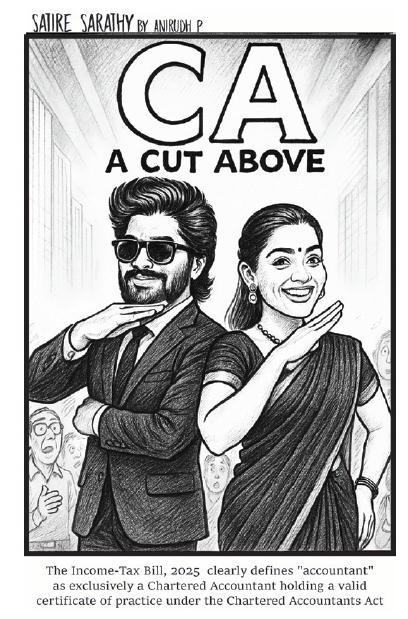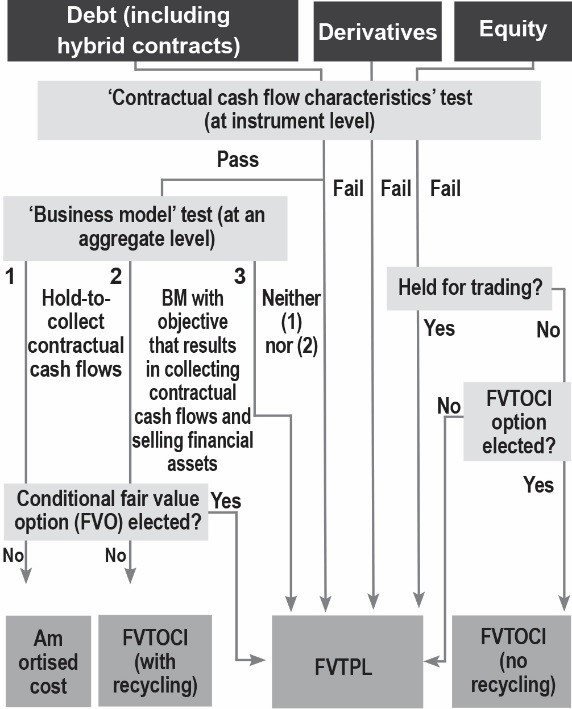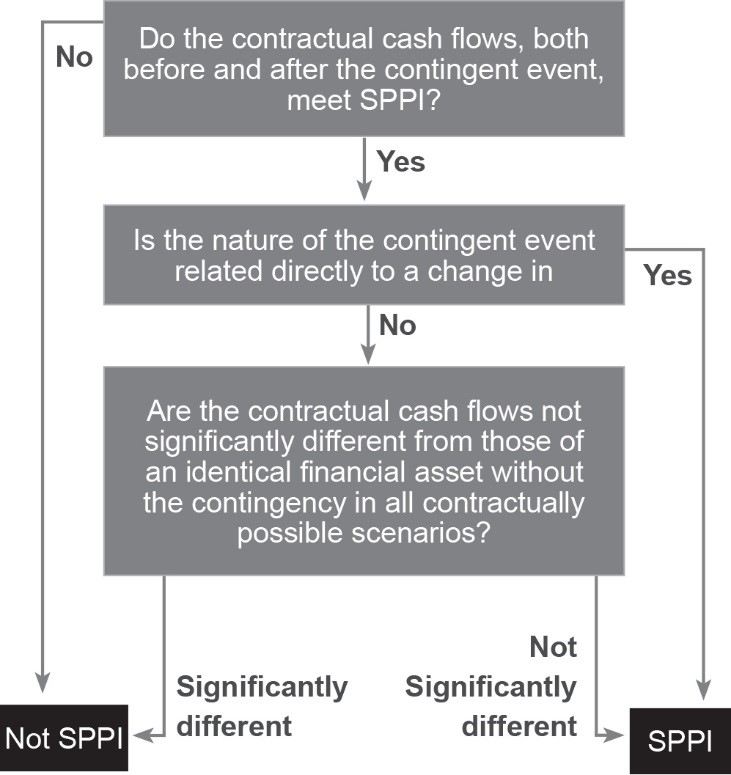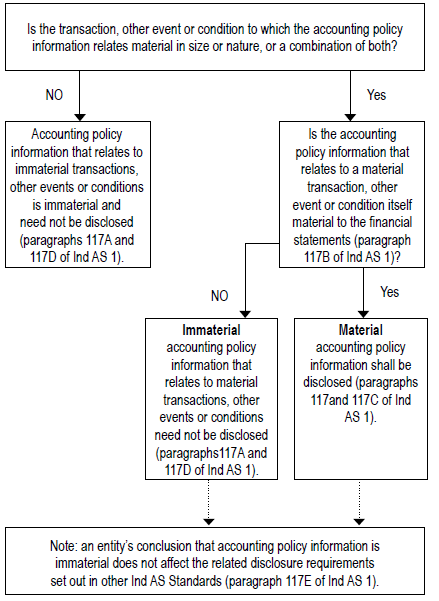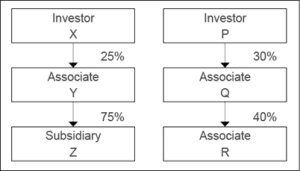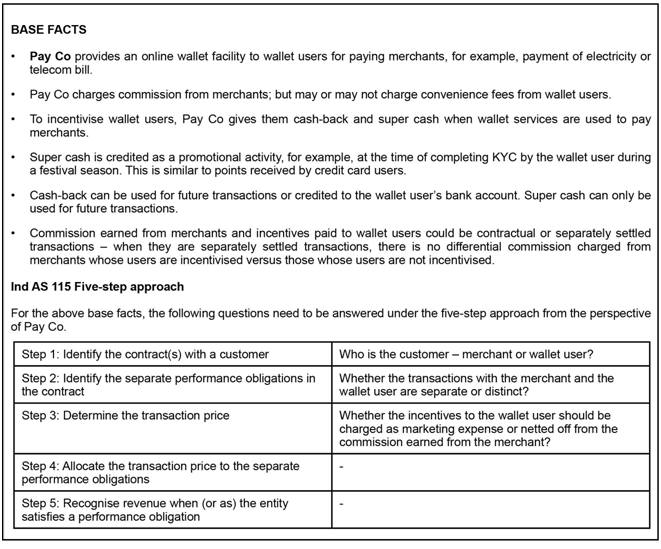Background
IAS 12 (Ind AS 12) Income
Taxes specifies requirements for
current and deferred
tax assets and
liabilities. However, there was no
clarity with respect to recognition and
measurement of uncertain
tax treatments. An‘uncertain tax treatment’
is a tax treatment for which there is uncertainty over whether the relevant
taxation authority will accept the entity’s tax treatment under tax law. For
example, an entity’s
decision not to include
particular income in taxable profit,
is an uncertain tax treatment if its acceptability is
uncertain under tax
law. IFRIC 23 Uncertainty over Income Tax
Treatments is an interpretation of IAS 12 that deals with recognition and
measurement of uncertain tax treatments. A corresponding interpretation is not
yet issued under Ind AS, but is expected shortly.
Uncertainty over Income Tax Treatments
In assessing whether
uncertainty over income tax treatments exists, an entity may consider a number
of indicators including, but not limited to, the following:
– Ambiguity in the drafting of relevant tax
laws and related guidelines (such as ordinances, circulars and letters) and
their interpretations
– Income tax practices that are generally
applied by the taxation authorities in specific jurisdictions and situations
– Results of past examinations by taxation
authorities on related issues
– Rulings and decisions from courts or other
relevant authorities in addressing matters with a similar fact pattern
– Tax memoranda prepared by qualified in-house
or external tax advisors
– The quality of available documentation to
support a particular income tax treatment.
Unit of Account
The Interpretation requires
an entity to determine whether to consider each uncertain tax treatment
separately or together with one or more other uncertain tax treatments. This
determination is based on which approach better predicts the resolution of the
uncertainty. In determining the approach that better predicts the resolution of
the uncertainty, an entity might consider, for example, (a) how it prepares its
income tax filings and supports tax treatments; or (b) how the entity expects
the taxation authority to make its examination and resolve issues that might
arise from that examination.
The author believes that
interdependent tax positions (i.e., where the outcomes of uncertain tax
treatments are mutually dependent) should be considered together. Significant
judgement may be required in the determination of the unit of account. In
making the judgement, entities would need to consider the approach expected to
be followed by the taxation authorities to resolve the uncertainty. The
judgement required in the selection of a unit of account may be particularly
challenging in groups of entities trading in various jurisdictions where the
relevant tax laws or taxation authority treat similar elements differently.
Example 1 – Unit of account
Entity A is part of a
multinational group and provides intra-group loans to affiliates. It is funded
through equity and deposits made by its parent. Whilst the entity can show that
its interest margin earned on many loans is at an appropriate market rate,
there are loans where the rate is open to challenge by the taxation
authorities. However, Entity A determines that, across the loan portfolio as a
whole, the existence of rates above and below a market comparator results in an
overall interest margin that is within a reasonable range accepted by the
taxation authorities.
Depending on the applicable
tax law and practice in a specific jurisdiction, a taxation authority may accept
a tax filing position on the basis of the overall interest margin if it is
within a reasonable range. However, there might be other taxation authorities
that would examine the interest rate separately for each loan receivable. In
considering whether uncertain tax treatments should be considered separately
for each loan receivable or combined with other loan receivables, Entity A
should adopt the approach that better reflects the way the taxation authority
would examine and resolve the issue.
Detection risk
The Interpretation requires
an entity to invariably assume that a taxation authority will examine amounts
it has a right to examine and have full knowledge of all related information
when making those examinations.
In some jurisdictions,
examination by taxation authorities is subject to a time limit, sometimes
referred to as a statute of limitations. In others, examination by taxation
authorities might not be subject to a statute of limitations, which means the
authorities can examine the amounts at any time in the future. Some respondents
to the draft Interpretation suggested in their comment letter that an
assessment of the probability of examination would be relevant in this latter
case. However, the IFRS Interpretation Committee (IC) decided not to change the
examination assumption, nor to create an exception to it, for circumstances in
which there is no time limit on the taxation authority’s right to examine
income tax filings.
The IC also noted that the
assumption of examination by the taxation authority, in isolation, would not
require an entity to reflect the effects of uncertainty. The threshold for
reflecting the effects of uncertainty is whether it is probable that the
taxation authority will accept an uncertain tax treatment. In other words, the
recognition of uncertainty is not determined based on whether a taxation
authority examines a tax treatment.
The Interpretation does not
explain what is meant by ‘results of examinations’. The examination procedures
vary by jurisdiction and, in some jurisdictions, an examination can have
multiple phases. In the author’s view, the communication between an entity and
the taxation authorities during the course of such examinations may provide
relevant information that could give rise to a change in facts and
circumstances before the actual ‘results’ of the examination are formally issued.
Example 2 – Detection risk
Entity A is based in
Country B. It is generally known that the taxation authorities in Country B
have limited resources. As a consequence, their examination procedures are
usually limited to a summary assessment of the income tax filings. Scrutiny tax
examinations are only performed in very rare circumstances and if there is a
clear indication of a tax fraud. Entity A has never been subjected to such a
scrutiny examination by the taxation authorities.
Prior to the application of
IFRIC 23, Entity A argued that it was unlikely that the taxation authorities
would identify any key income tax exposures not already identified through
their summary assessment, because they could be identified only by analysing
the underlying accounting records. Therefore, Entity A did not recognise any
uncertain tax treatments.
With the adoption of IFRIC
23, Entity A would need to consider underlying tax positions even though
scrutiny by the taxation authorities is unlikely. Entity A should assume that
the taxation authority can and will examine amounts it has a right to examine
and have full knowledge of all related information when making those
examinations.
Recognition and Measurement
Under IFRIC 23, the key
test is whether it’s probable that the taxation authority would accept the tax
treatment used or planned to be used by the entity in its income tax filings.
If yes, then the amount of taxes recognised in the financial statements would
be consistent with the entity’s income tax filings. Otherwise, the effect of
uncertainty should be estimated and reflected in the financial statements. This
would require the exercise of judgement by the entity. The recognition of
current and deferred taxes including uncertain tax treatments continues to be
on the underlying principle of “probability”. The measurement requirements in
IFRIC 23 do not distinguish between a probability of 51% and a probability of
100%. This is consistent with the objective of IAS 12 (Ind AS 12) that refers
to a probable threshold and with the Conceptual Framework for Financial
Reporting which refers to a probability threshold for the recognition of
assets and liabilities in general. It should be noted that deferred tax assets
on carry forward of losses can be recognised only if there is convincing
evidence that it will be utilised in future years.
Example 3 – Current and deferred tax impact
Entity C, constructs and
leases wooden chalet at hill stations, and claims 100% depreciation on the
basis that they are temporary structures. However, the tax laws may not
consider them as temporary structures and therefore there is a risk that the
100% depreciation claim may be disallowed. On application of IFRIC 23, Entity C
should reflect the impact of such uncertainties in the measurement of current
and deferred tax assets and liabilities as at the reporting date.
An entity may need to apply
judgement in concluding whether it is probable that a particular uncertain tax
treatment will be acceptable to the taxation authority. An entity may consider
the following:
– Past experience related to similar tax
treatments
– Legal advice or case law related to other
entities
– Practice guidelines published by the taxation
authorities
– The entity obtains a pre-clearance from the
taxation authority on an uncertain tax treatment.
In defining ‘uncertainty’,
the entity only needs to consider whether a particular tax treatment is probable,
rather than highly likely or certain, to be accepted by the taxation
authorities. If an entity concludes it is probable that the taxation authority
will accept an uncertain tax treatment, the entity shall determine the taxable
profit or loss, deferred taxes, unused tax losses, unused tax credits or tax
rates consistently with the tax treatment used or planned to be used in its
income tax filings. If an entity concludes it is not probable that the taxation
authority will accept an uncertain tax treatment, the entity shall reflect the
effect of uncertainty in determining the related taxable profit or loss,
deferred taxes, unused tax losses, unused tax credits or tax rates. An entity
shall reflect the effect of uncertainty for a unit of uncertain tax treatment
by using either of the following methods, depending on which method the entity
expects to better predict the resolution of the uncertainty:
a) the
most likely amount—the single most likely amount in a range of possible
outcomes. The most likely amount may better predict the resolution of the
uncertainty if the possible outcomes are binary or are concentrated on one
value.
b) the
expected value—the sum of the probability-weighted amounts in a range of
possible outcomes. The expected value may better predict the resolution of the
uncertainty if there is a range of possible outcomes that are neither binary
nor concentrated on one value.
If an uncertain tax
treatment affects current tax and deferred tax (for example, if it affects both
taxable profit used to determine current tax and tax bases used to determine
deferred tax), an entity shall make consistent judgements and estimates for
both current tax and deferred tax.
Example 4 – Application of Expected Value Method
– Entity A’s income tax filing in a
jurisdiction includes deductions related to transfer pricing. The taxation
authority may challenge those tax treatments.
– Entity A
notes that the taxation authority’s decision on one transfer pricing matter
would affect, or be affected by, the other transfer pricing matters. Entity A
concludes that considering the tax treatments of all transfer pricing matters
in the jurisdiction together better predicts the resolution of the uncertainty.
Entity A also concludes it is not probable that the taxation authority will
accept the tax treatments. Consequently, Entity A reflects the effect of the
uncertainty in determining its taxable profit.
– Entity A estimates the probabilities of the
possible additional amounts that might be added to its taxable profit, as
follows:
|
|
Estimated additional amount, INR
|
Probability, %
|
Estimate of expected value, INR
|
|
Outcome 1
|
–
|
15%
|
–
|
|
Outcome 2
|
200
|
5%
|
10
|
|
Outcome 3
|
400
|
20%
|
80
|
|
Outcome 4
|
600
|
10%
|
60
|
|
Outcome 5
|
800
|
30%
|
240
|
|
Outcome 6
|
1,000
|
20%
|
200
|
|
|
|
100%
|
590
|
– Outcome 5 is the most likely outcome.
However, Entity A observes that there is a range of possible outcomes that are
neither binary nor concentrated on one value. Consequently, Entity A concludes
that the expected value of INR 590 better predicts the resolution of the
uncertainty.
– Accordingly, Entity A recognises and measures
its current tax liability that includes INR 650 to reflect the effect of the
uncertainty. The amount of INR 590 is in addition to the amount of taxable
profit reported in its income tax filing.
Example 5 – Application of the Most Likely Outcome Method
– Entity B acquires for INR 100 a separately
identifiable intangible asset that has an indefinite life and, therefore, is
not amortised applying IAS 38 (Ind AS 38) Intangible Assets. The tax law
specifies that the full cost of the intangible asset is deductible for tax
purposes, but the timing of deductibility is uncertain. Entity B concludes that
considering this tax treatment separately better predicts the resolution of the
uncertainty.
– Entity B deducts INR 100 (the cost of the
intangible asset) in calculating taxable profit for Year 1 in its income tax
filing. At the end of Year 1, Entity B concludes it is not probable that the
taxation authority will accept the tax treatment. Consequently, Entity B
reflects the effect of the uncertainty in determining its taxable profit and
the tax base of the intangible asset. Entity B concludes the most likely amount
that the taxation authority will accept as a deductible amount for Year 1 is
INR20 and that the most likely amount better predicts the resolution of the
uncertainty.
– Accordingly, in recognising and measuring its
deferred tax liability at the end of Year 1, Entity B calculates a taxable
temporary difference based on the most likely amount of the tax base of INR 80
(INR 100 – INR 20) to reflect the effect of the uncertainty, instead of the tax
base calculated based on Entity B’s income tax filing (INR 0).
– Entity B reflects the effect of the
uncertainty in determining taxable profit for Year 1 using judgements and
estimates that are consistent with those used to calculate the deferred tax
liability. Entity B recognises and measures its current tax liability based on
taxable profit that includes INR 80 (INR 100 – INR 20). The amount of INR80 is
in addition to the amount of taxable profit included in its income tax filing.
This is because Entity B deducted INR 100 in calculating taxable profit for
Year 1, whereas the most likely amount of the deduction is INR 20.
Changes in facts and circumstances
An entity shall reassess a
judgement or estimate required by this Interpretation, if the facts and circumstances
on which the judgement or estimate was based change or as a result of new
information that affects the judgement or estimate. For example, a change in
facts and circumstances might change an entity’s conclusions about the
acceptability of a tax treatment or the entity’s estimate of the effect of
uncertainty, or both. An entity shall reflect the effect of a change in facts
and circumstances or of new information as a change in accounting estimate
applying IAS 8 (Ind AS 8) Accounting Policies, Changes in Accounting
Estimates and Errors. An entity shall apply IAS 10 (Ind AS 10) Events
after the Reporting Period to determine whether a change that occurs after the
reporting period is an adjusting or non-adjusting event.
Examples of changes in
facts and circumstances or new information that, depending on the
circumstances, can result in the reassessment of a judgement or estimate
required by this Interpretation include, but are not limited to, the following:
(a) examinations
or actions by a taxation authority. For example:
(i) agreement
or disagreement by the taxation authority with the tax treatment or a similar
tax treatment used by the entity;
(ii) information
that the taxation authority has agreed or disagreed with a similar tax
treatment used by another entity; and
(iii) information
about the amount received or paid to settle a similar tax treatment.
(b) changes
in rules established by a taxation authority.
(c) the
expiry of a taxation authority’s right to examine or re-examine a tax
treatment.
Example 6 – Change in facts and circumstances
Entity A claimed a
tax-deduction for a particular expense item. In the prior year, Entity A had
concluded that it was probable that the taxation authority would accept the tax
deduction. However, during the current year, Entity A is alerted by a similar
issue where a tax deduction was denied in a ruling by the Supreme Court. The
recent court ruling is considered a change in facts and circumstances. As a
result, Entity A has to reassess the uncertain tax treatment, taking into
account the recent Supreme Court decision.
Example 7 – Events after the reporting date
Scenario A
Entity C had claimed a tax
deduction for a particular expense item in its tax return related to the
financial year ending 31st December 2018. However, for the purpose
of recognising current and deferred taxes in that year, Entity C had concluded
that it is not probable that the taxation authorities will accept the tax
deduction. Accordingly, Entity C had recognised an additional tax liability
relating to the uncertainty. In February 2020, before the approval of the
financial statements for the year ending 31st December 2019, Entity
C receives the final tax assessment for 2018. The tax assessment confirms the
full deductibility of the expense item. The confirmation of tax deduction
received after the reporting period and prior to authorisation of the financial
statements for 2019 is considered as an adjusting event after the reporting
period. Accordingly, the additional tax liability that was recognised in 2018
relating to the uncertainty is released in the 2019 period.
Scenario B
Entity B claimed a
tax-deduction pertaining to interest expense on a loan granted by an affiliated
company, amounting to INR 500,000 in its tax return related to the financial
statements for the year ending 31st December 2018. However, for the
purposes of recognising current and deferred taxes for that year, Entity B had
concluded that the taxation authorities will only accept a deduction of INR 100,000.
In March 2020, before the approval of the financial statements for the year
ending 31st December 2019, Entity B learns from its tax advisor that
the taxation authorities have confirmed that they will accept, on a
retrospective basis, another method of determining interest rate at arm’s
length that would lead to a tax deduction of INR 300,000 in year 2018. In this
example, it appears that the taxation authorities have issued a new guideline
on deductibility of interest expenses relating to a loan from an affiliated
company. Accordingly, in contrast to Scenario A above, the information received
in March 2020 is considered as a non-adjusting event after the reporting period
for the 2019 financial statements.
Absence of an explicit
agreement or disagreement by the taxation authorities on its own is unlikely to
represent a change in facts and circumstances, or new information that affects
the judgements and estimates made. In such situations, an entity has to
consider other available facts and circumstances before concluding that a
reassessment of the judgements and estimates is required.
An uncertain tax treatment
is resolved when the treatment is accepted or rejected by the taxation
authorities. The Interpretation does not discuss the manner of acceptance
(i.e., implicit or explicit) of an uncertain tax treatment by the taxation
authorities. In practice, a taxation authority might accept a tax return
without commenting explicitly on any particular treatment in it. Alternatively,
it might raise some questions in an examination of a tax return. Unless such
clearance is provided explicitly, it is not always clear if a taxation
authority has accepted an uncertain tax treatment. An entity may consider the
following to determine whether a taxation authority has implicitly or
explicitly accepted an uncertain tax treatment:
– The tax treatment is explicitly mentioned in
a report issued by the taxation authorities following an examination
– The treatment was specifically discussed with
the taxation authorities (e.g., during an on-site examination) and the taxation
authorities verbally agreed with the approach; or
– The treatment was specifically highlighted in
the income tax filings, but not subsequently queried by the taxation
authorities in their examination.
Disclosures
There are no new disclosure
requirements in IFRIC 23. However, entities are reminded of the need to
disclose, in accordance with existing IFRS (Ind AS) standards. When there is
uncertainty over income tax treatments, an entity shall determine whether to
disclose: judgements made in determining taxable profit (tax loss), tax bases,
unused tax losses, unused tax credits and tax rates; and information about the
assumptions and estimates made in determining taxable profit (tax loss), tax
bases, unused tax losses, unused tax credits and tax rates under IAS 1 (Ind AS
1) Presentation of Financial Statements. If an entity concludes it is
probable that a taxation authority will accept an uncertain tax treatment, the
entity shall determine whether to disclose the potential effect of the
uncertainty as a tax-related contingency under IAS 12 (Ind AS 12).
Effective date and transition
IFRIC 23 applies to annual
reporting periods beginning on or after 1st January 2019. Earlier
application is permitted. Entities can apply the Interpretation using either of
the following approaches:
– Full retrospective approach: this approach
can be used only if it is possible without the use of hindsight. The
application of the new Interpretation will be accounted for in accordance with
IAS 8, which means comparative information will have to be restated; or
– Modified retrospective approach: no
restatement of comparative information is required or permitted under this
approach. The cumulative effect of initially applying the Interpretation will
be recognised in opening equity at the date of initial application, being the
beginning of the annual reporting period in which an entity first applies the
Interpretation.
It
is not clear as to when this interpretation will apply under Ind AS. It is most
likely that this Interpretation may apply from annual reporting periods
beginning on or after 1st April 2019.
Key challenges
– Applying the Interpretation could be
challenging for entities, particularly those that operate in more complex
multinational tax environments.
– It would be challenging for entities to
estimate the income tax due with respect to tax inspections, when tax
authorities examine different types of taxes together and issue a report with a
single amount due therein.
– Entities may also need to evaluate whether
they have established appropriate processes and procedures to obtain
information, on a timely basis, that is necessary to apply the requirements in
the Interpretation and make the required disclosures.
– IFRIC 23 requires an entity to assume a
detection risk of 100%. An entity should not take any credit for the
possibility that uncertain tax treatments could be overlooked by the taxation
authority. This is a different approach compared to existing practice that may
lead to changes when the Interpretation is first applied. This could be a
challenging task in some cases.
Frequently Asked Questions
Will this
Interpretation apply to uncertain treatments of other taxes, for example GST?
Although uncertainty exists
in the determination of GST liability, IFRIC 23 is not applicable since GST is
not a tax on income and not in the scope of IAS 12 (Ind AS 12)/IFRIC 23. Rather
they would be covered under IAS 37 (Ind AS 37) Provisions, Contingent
Liabilities and Contingent Assets. It may be noted that whilst the
underlying principle for recognition in both standards is “probability”, the
measurement basis under the two standards are significantly different.
In a
particular jurisdiction, if tax is not deducted at source with respect to
royalty payments to non-resident the entity is subjected to penalty and also
disallowance of the royalty expenses in computation of taxable income. Is the
penalty and disallowance of the royalty expense covered under IFRIC 23?
Penalty is not a tax on
income and hence are not covered under IFRIC 23. Rather they would be covered
under IAS 37 (Ind AS 37) Provisions, Contingent Liabilities and Contingent
Assets. The disallowance of royalty expenses which is included in the
taxable income will be subjected to the requirements of IAS 12 (Ind AS 12) and
IFRIC 23.
Will
Interest and penalties levied by Income tax Authorities be covered under this
Interpretation?
IAS 12 (Ind AS 12) does not
explicitly refer to interest and penalties payable to, or receivable from, a
taxation authority, nor are they explicitly referred to in other IFRS
Standards. A number of respondents to the draft Interpretation suggested in
their comment letter that the Interpretation explicitly include interest and
penalties associated with uncertain tax treatments within its scope. Some said
that entities account for interest and penalties differently depending on
whether they apply IAS 12 (Ind AS 12) or IAS 37 (Ind AS 37) Provisions,
Contingent Liabilities and Contingent Assets to those amounts.
The IC decided not to add
to the Interpretation requirements relating to interest and penalties
associated with uncertain tax treatments. Rather, the IC noted that if an
entity considers a particular amount payable or receivable for interest and
penalties to be an income tax, then that amount is within the scope of IAS 12
and, when there is uncertainty, also within the scope of this Interpretation.
Conversely, if an entity does not apply IAS 12 to a particular amount payable
or receivable, then this Interpretation does not apply to that amount,
regardless of whether there is uncertainty.
An entity
determines that an uncertain tax treatment is not probable but is possible and
hence disclosure as contingent liability is required. Whether the contingent
liability disclosure will also include the consequential interest and penalty
amount?
Interest amount will be
included in the contingent liability amount if there is no or very little
likelihood of waiver. On the other hand, penalty amount may be waived by the
tax authorities. If it is probable that the penalties may be waived by the tax
authorities, they are not included in the contingent liability amount.
In evaluating
the detection risk, should an entity consider probability of detection by the
Income-tax authorities rather than assuming an examination will occur in all
cases?
The IC decided that an
entity should assume a taxation authority will examine amounts it has a right
to examine and have full knowledge of all related information. In making this
decision, the IC noted that IAS 12 (Ind
AS 12) requires an entity to measure tax assets and liabilities based on tax
laws that have been enacted or substantively enacted.
A few respondents to the
draft Interpretation suggested that an entity consider the probability of
examination, instead of assuming that an examination will occur. These
respondents said such a probability assessment would be particularly important
if there is no time limit on the taxation authority’s right to examine income
tax filings.
The IC decided not to
change the examination assumption, nor create an exception to it for
circumstances in which there is no time limit on the taxation authority’s right
to examine income tax filings. Almost all respondents to the draft
Interpretation supported the examination assumption. The IC also noted that the
assumption of examination by the taxation authority, in isolation, would not
require an entity to reflect the effects of uncertainty. The threshold for
reflecting the effects of uncertainty is whether it is probable that the
taxation authority will accept an uncertain tax treatment. In other words, the
recognition of uncertainty is not determined based on whether a taxation
authority examines a tax treatment.
Will the
principles of “virtual certainty” apply for recognition of current and deferred
tax assets in cases where there is uncertainty of tax treatments?
When the key test of the
Interpretation would result in the entity recognising tax assets (i.e. based on
the probability that the taxation authorities would accept the entity’s tax
treatment), the entity is not required to demonstrate the ‘virtual certainty’
of the tax authority accepting the entity’s tax treatment in order to recognise
such a tax asset. The underlying principle of “probability” will apply for
recognition of current and deferred tax asset arising from uncertain tax
treatments. Consider the example below.
Example 8 – Measurement of tax positions
The management of Entity B
decides to undertake a group-wide restructuring and records a restructuring
liability of INR 1,000,000. Entity B has tax loss carry-forwards of INR
1,200,000. Excluding the restructuring liability, taxable profit for the
current year is INR 2,000,000. Entity B is uncertain whether the local taxation
authorities will accept a deduction for the restructuring costs. However, it
analyses all available evidence and concludes that it is probable that the
taxation authorities will accept the deduction of the INR 1,000,000 in the year
when it is recorded.
Entity B therefore
estimates its taxable profit to be INR 1,000,000 and that this will be fully
offset with tax loss carry-forwards from the INR 1,200,000 available. As a
consequence, there is no current income tax charge in the period and Entity B
determines a remaining tax loss carry-forward balance of INR 200,000. As
management has convincing evidence that Entity B will realise sufficient
taxable profits in the future, it records a deferred tax asset for the unused
tax losses of INR 200,000. Though convincing evidence is required to record a
deferred tax asset on carry forward losses (INR 200,000), the acceptability of
uncertain tax treatments (INR 1,000,000) by the tax authorities is based on the
principle of “probability”.
Conclusion
For many large sized
entities or those with significant income tax litigations or complications,
this Interpretation may well be a significant change. Management and Audit
Committees should ensure that the Interpretation is properly understood and
complied with. Tax advisors too need to get upto speed on the standard, since
this standard may have significant impact on income tax computation and
assessments. _
